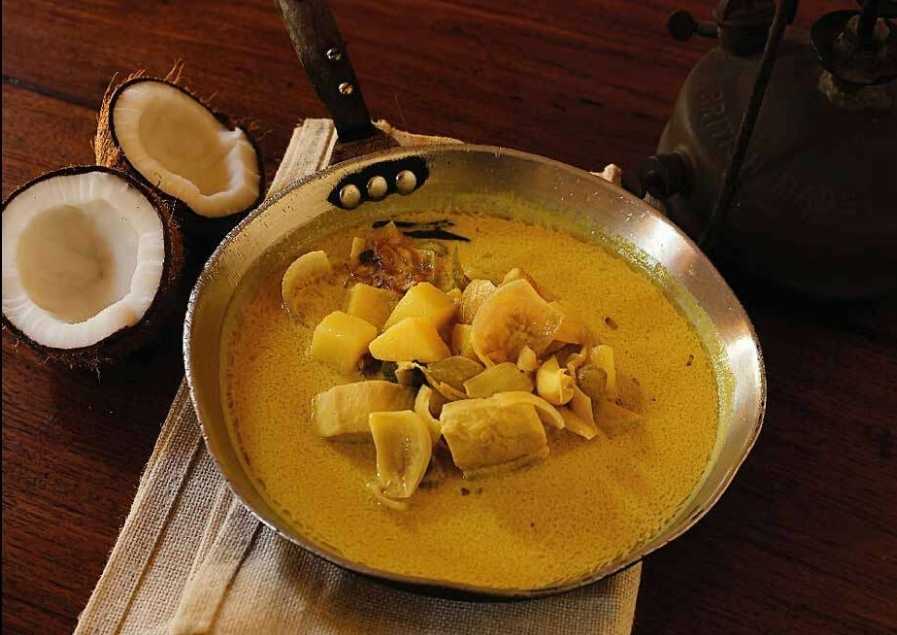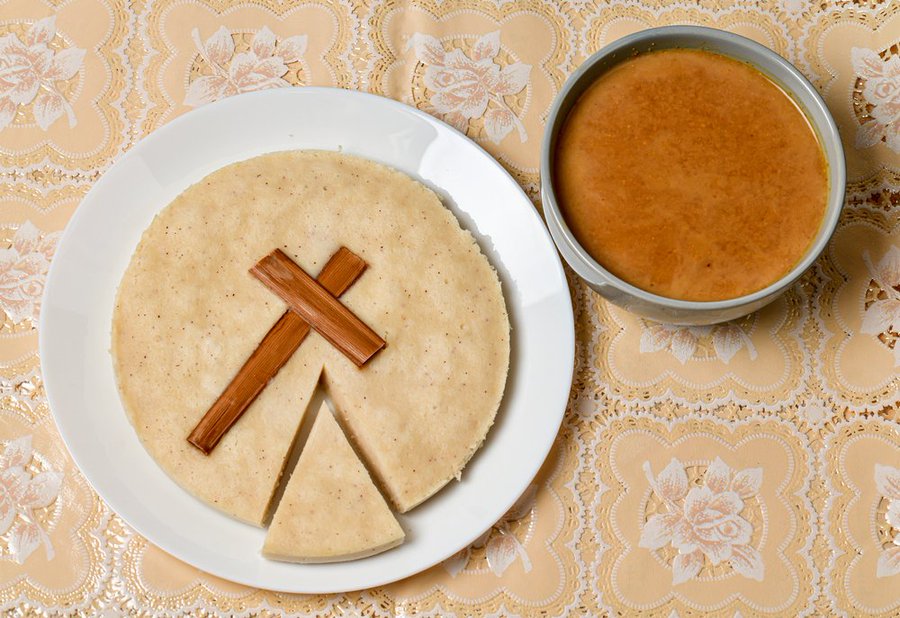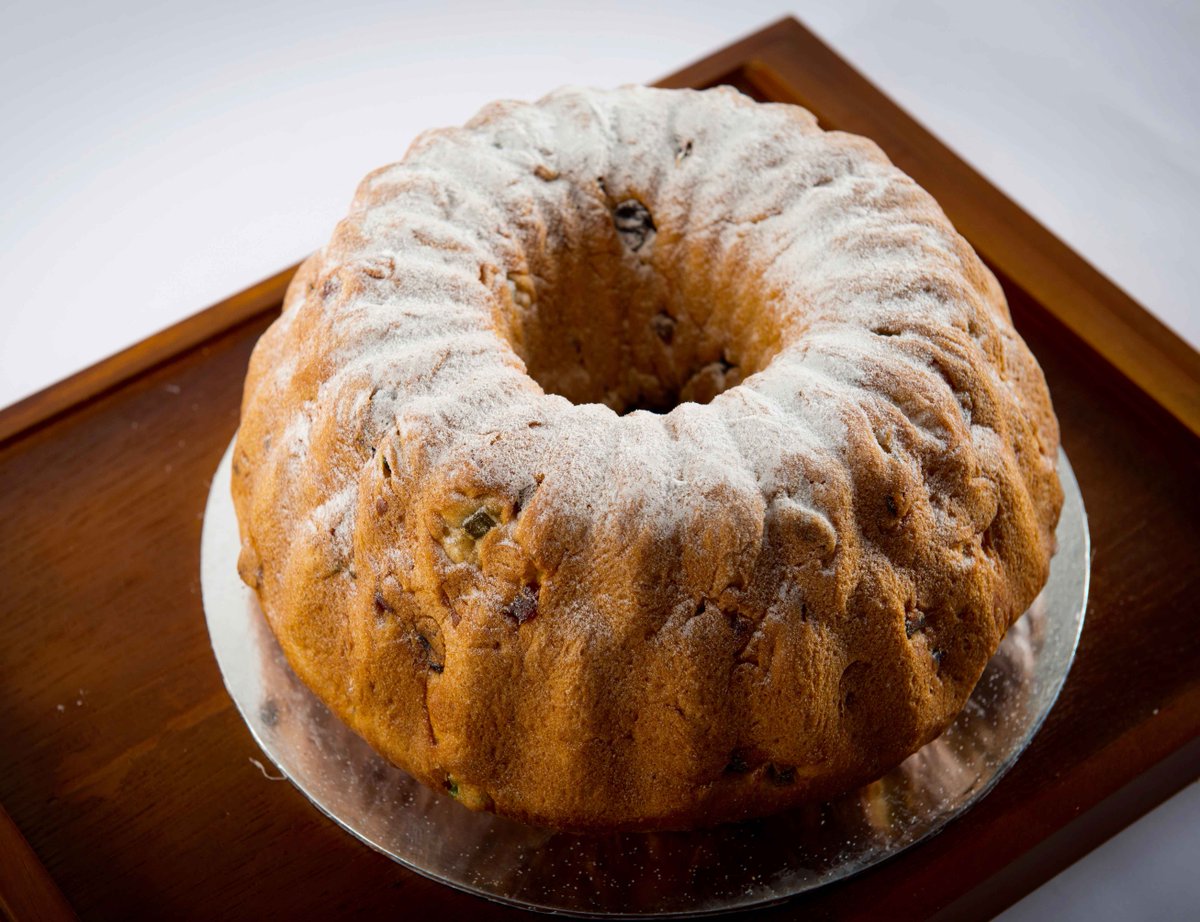Tanya Abraham, a journalist, grew up in Fort Kochi. Her childhood was largely shaped by two factors — food and history. The women in her home, particularly her grandmother, Annie Burleigh Kurishingal, played a vital role in this. As did the city.
Tanya grew up witnessing a confluence of cultures — Jews, Arabs, Muslims, and Konkani Brahmins. Through the years, their stories become windows through which she viewed the culinary landscape of the world.
Their history intrigued her, as did their food. And in a quest to dive deeper into these hidden treasures, she wrote ‘Fort Cochin’ in 2009, followed ten years later by ‘Eating with History’, which she dedicated to her grandmother.
“All the recipes in this book [Eating with History] have been soul food to someone at some point in time,” she points out. For Tanya, her own fondest memories involve her ammama (grandmother).
In the book, she recalls how the latter’s starch white chatta and mundu (traditional attire worn by catholic women in Kerala) yellowed through the day as masalas stained it. Long hours of working in the kushinchya (kitchen) to serve a large joint family of 30 were to blame.
But all was forgotten as the guests relished the homemade rose cookies and devoured the meen pollichathu (fish cooked in banana leaves) dish. These frequent visitors were not always relatives, but a host of businessmen, political people, nationalists, and missionaries, all part of the Independence movement.
Food, she discovered, was always the soul of the home. And still is.
But when her ammama passed away at the ripe old age of 104, to Tanya it felt almost like a storehouse of culinary delights went away with her. It made her think of all the women who, like her grandmother, had brewed magic through their recipes. These would be lost in time if not preserved.
Fuelled by this thought, Tanya went on “a life-changing journey” across Kerala to unearth the recipes of traditional dishes as told by the women of the country. “Writing this book was almost like reliving her grandmother’s mind in many ways,” she shares.

Today, Eating with History is an ode to every woman who gives food a life of its own in the kitchens across India.
Here are a few of the rare dishes that Tanya chanced upon during her research process. You can find the recipes for these in her book, here.
1. Peechinga Chamandi
No dish in a Kerala household is complete without dousing it in spices. The spice influence borrows from an interesting story, shares Tanya. When Lord Parasuram, one of the ten avatars of Lord Vishnu, threw his axe into the Arabian Sea, it landed on a piece of land that bore great wealth and held spices. This is where the spice trade began.
Take for instance the ridge gourd chutney, a tangy preparation known for its spice quotient. The preparation is quick and made for last-minute guests, a common feature in most homes.
2. Pesaha Appam

This is unleavened bread prepared without using yeast and commonly eaten on Maundy Thursday (Pesaha Vyazhacha). Tanya’s book tells of how it is made with great solemnity by the women of the household.
“The bread is cooked by placing a cross made from the palm leaf received on Palm Sunday. In the evening, the male head of the family breaks the bread after prayers and shares it with his family to commemorate the Last Supper. The bread is eaten with a jaggery sauce,” the book notes.
3. Ariputtu
In the 15th century when the Portuguese entered Kerala, they brought with them spices, potatoes, chillies, etc. One of the foods they “invented”, shares Tanya in her book, was the puttu (a steamed rice cake).
The book talks of how the puttu was originally made in bamboo steamers or coconut shells but has now shifted to more user-friendly metal puttu-makers. In contrast to the previously used oralus (granite tools), mill-ground rice is now used.
4. Chemeen Pada
The shrimp pickle, a staple in Tanya’s household, is an ode to the Portuguese tradition of pickling meats in vinegar. In fact, as Tanya writes, vinegar is one of the most important foods brought to Kerala during the colonisation in the 15th century.
“The Portuguese used vinegar extensively in their food; especially to preserve salted meats with paprika and garlic which were stored in large barrels during their voyages in ships to lands afar. This proved to be a quick savouring dish when fried in oil, close to the meat pickle famously relished in Kerala today.”
5. Kazhal Kothiyathu
The Latin Catholic minced liver fry recipe prepared by Tanya’s grandmother differs from other community recipes in terms of preparation. “This is not unusual,” shares Tanya, who noticed how cooking styles and recipes differed across catholic communities even within Kerala itself.
“When choppers were not available, quick and constant chopping of the meat on a large wooden board (with two knives on either hand) was how the liver was minced to a fine form. A task that required not only strength but also precision,” notes the book.
6. Dutch bread

The bread known as ‘bluder’, ‘brudel’, ‘blueda’, ‘bloeder’ and ‘blueda’ is a remnant of the Dutch rule in the 17th century. It amassed immense popularity as a culinary gem and is still enjoyed centuries after the Dutch rule ended in Kochi.
Prepared with maida, sugar, eggs, ghee and yeast, the bread also features raisins in rare cases. “It is said that the raisins do not sink to the bottom in a breudher made well,” Tanya writes.
7. Neiappam
The Jewish community entered Kerala in the 15th and 16th centuries from Spain and Portugal, bringing their food along with them. In the book, Tanya writes that it was due to the Portuguese tyranny that they fled to Kochi and thrived in Jew Town in Mattancherry. While today, only vestiges of the Malabari synagogues are present in Kerala, the culinary legacy they left behind is still prevalent. For instance, the ispethi (red beef stew) and neiappam.
“A breakfast or tea time snack, which the Jews especially prepare during Hannukah as a popular treat during the festival, neiappam is popular across Kerala and also called unniyappam,” the book mentions.
Edited by Padmashree Pande
No comments:
Post a Comment